Pink hues of flamingos, flocks of cranes taking off, mighty eagles waiting for the meal of the day, pelicans with their large beaks swimming gracefully with the much smaller ducks, harriers flying gracefully over the grasslands, herds of Wild Asses running in the vast desert, and foxes scuttling away with food for their playful kids. Welcome to India’s Western-most wilderness – Rann of Kutch.
Join Darter Photography this December on “Wild Wild West – Wildlife Photography Tour of Kutch”. The various habitats of Little and Greater Rann of Kutch offer almost endless opportunities to watch and photograph wildlife.
Tour Dates
Start date: 24th December, 2011 (Saturday) morning at Ahmedabad
End Date: 1st January, 2012 (Sunday) morning at Bhuj
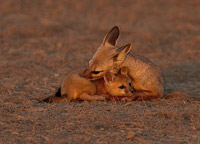
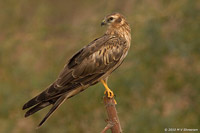
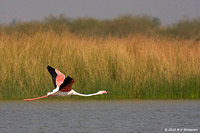
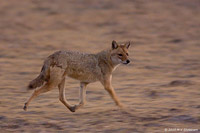
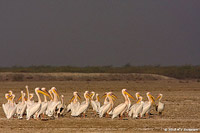
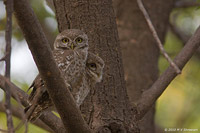
See full details and registration information at Wildlife Photography Tour to Kutch.
For a very long time, I was unsure about all the great things one gets to hear about the well-known backwaters of Kerala. Is it really as awesome as it is projected to be? Is it really as beautiful as depicted by the photographs or is it just the photogenic nature of water that makes it look so good? Is it simply great marketing or is there enough dough in in the place that is worth all the marketing? Is it worth all the money that you pay for the backwater cruises and houseboat trips? There were many doubts in a corner of my mind that refused to go away. I wasn’t very convinced. At least until work took me to a few places in these famed backwaters and offered me a glimpse this watery expanse. In my first houseboat cruise, I was completely sold. A row-boat trip helped add to the charm. Another trip on a small shikara boat on a day when it was raining cats and dogs made me a total fan of this rural landscape. No landscapes seemed more charming, no experience was parallel to this romance with water.
While I gear up for two more trips to the backwaters in the next few months, thanks to work that takes me there, a few pictures here from my earlier visits.
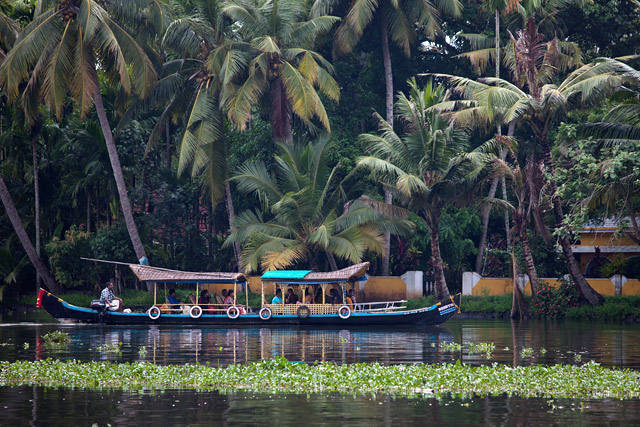
Deep in the interiors, the backwaters are so picturesque that it appears like a fairytale land. The coconut trees, the green expanse, colourful houses and beautiful boats – all reflected in the calm waters.
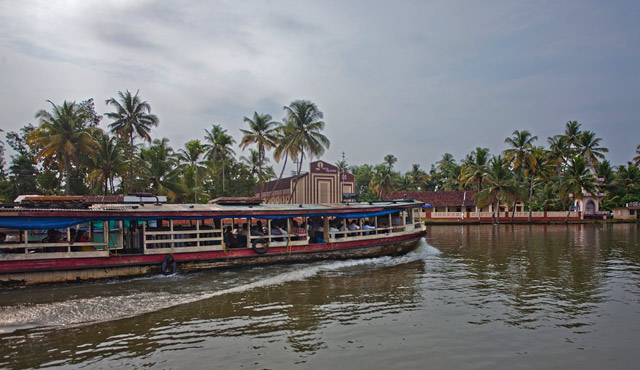
A large number of people live along the backwaters, some parts of which are islands and do not have connectivity by road. A transport network operates on the waters, very similar to roads. There are main waterways that are like highways, connected by large ferries, while the smaller channels are supported by rowboats and shikaras. A public transport network exists along the backwaters, managed by the water transport department of Kerala.
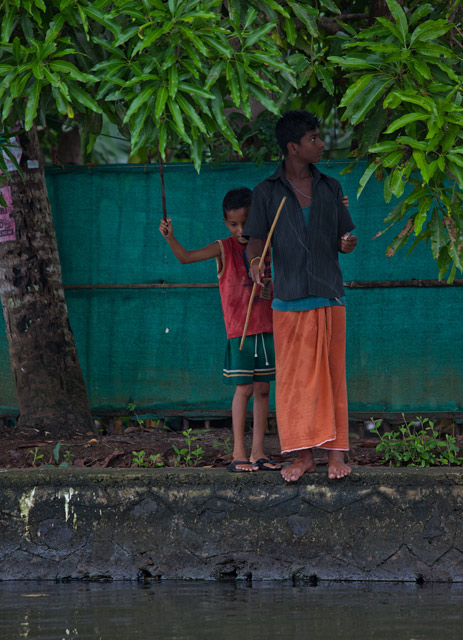
For people living in the backwaters, much of their life depends on the lake. There are many houses that face the canals, where you are right on the bank the moment you step out of the house. Some times it makes one wonder what happens to the houses when the water level rises. But since the backwaters are connected with the see, it is rare that you see the water levels rising. What is really interesting is to see some houses built below the level of water at places, protected by bunds to stop water from rushing in.
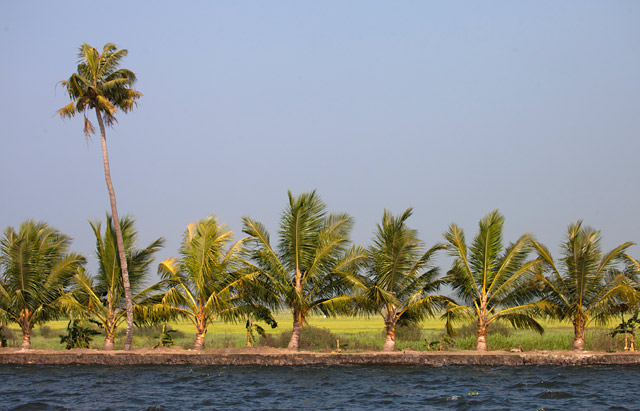
Several islands are built artificially all along the backwaters, where land is reclaimed from the lake and people have settled in to grow paddy or to rear fish. Water from some such reclaimed lands has to be routinely pumped out to keep it dry. In a curious occurrence, while farmers across the country work to bring in water and let it stagnate in the paddy fields, here in the backwaters they need to pump out excess water from the fields. Sometimes, you see just a narrow bund separating two parts of the waterways, and the strip used for growing coconuts.
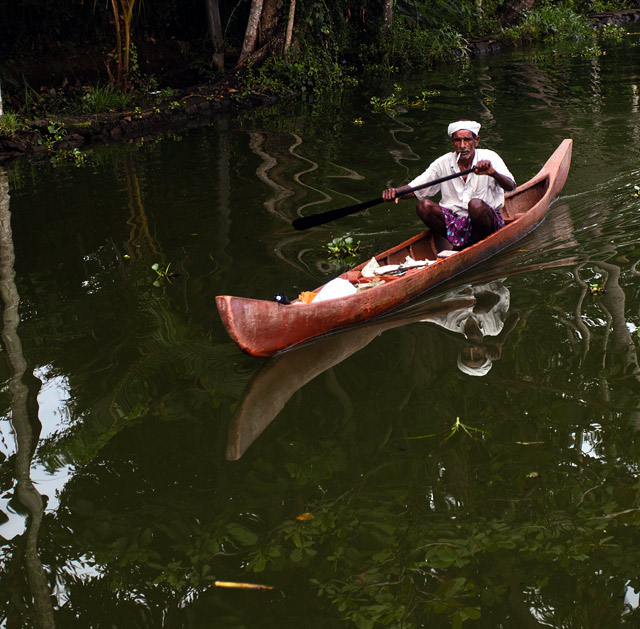
Where there are people, there will be vendors. The backwaters also serve as a marketplace. You see restaurants facing the canals, some serving the locals and some positioned for the tourists. There will be vendors selling fish, food and several type of household materials, rowing their tiny boat with their wares. People use boats of different sizes – motored and non-motored – to move goods from place to place. It is amazing how the canals are not very different from roads.
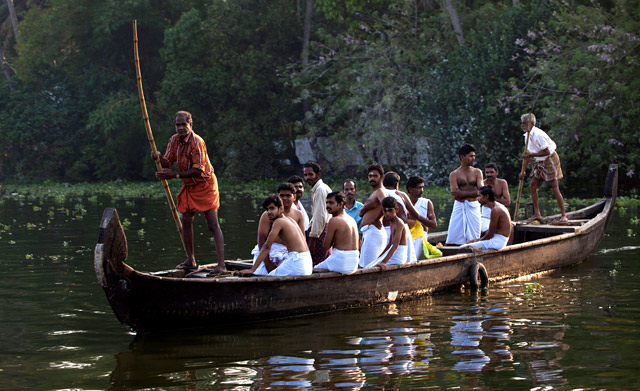
The evening sun in the winter makes the backwaters appear glorious, adding more colours to the already picturesque countryside. On my brief houseboat cruise, when I was searching for some dough for a writing assignment, I came across several interesting aspects of life along the backwaters. Here is one such moment. While I did not get a chance to speak to people in the boat, it seemed like a ritual performed for the departed soul.
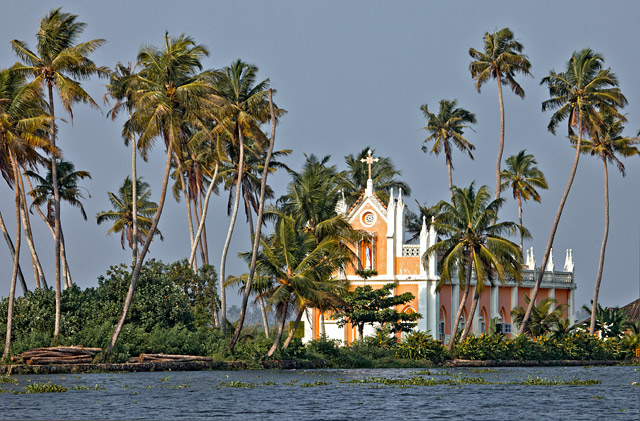
Temples, churches and mosques add a sudden burst to otherwise blue and green expanse of the backwaters. Sometimes they appear to be in a place nowhere and completely inaccessible, which is true to some extent because a lot of places in the backwaters can only be approached by a boat, with no road access to the places.
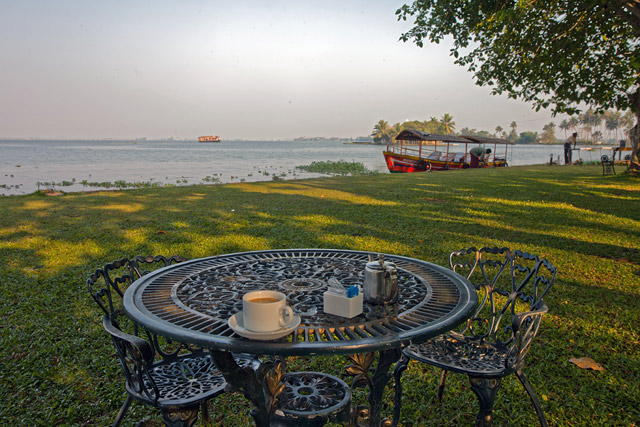
Tourism, of course, is now one of the biggest activities in the backwaters. Houseboats that once used to transport rice to the markets now troll the backwaters with tourists on board. Luxury resorts line the edge of the backwaters, offering their guests an uninterrupted view of the lake all through the day. There are many factors that might have contributed to this, including an amazing marketing effort from the government of Kerala besides the fact that this is indeed a beautiful location.
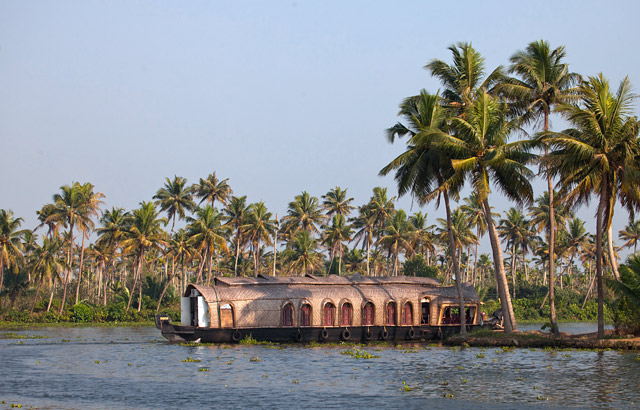
The houseboats are a great way to explore the expanse of backwaters. They come with all creature comforts – well equipped rooms and kitchen – and can effortlessly move through the vast stretch of Vembanad Lake. However, these big boats can only cruise along the major channels and are not capable of reaching the islands in the interior. To compare, travelling on them is like moving on a highway (a picturesque one this time), but missing out everything that happens along the smaller roads, where life usually unfolds closer to you. A better way to to explore the region and get up-close to the everything is to take small shikaras or row boats that can go into the smallest of the canals.
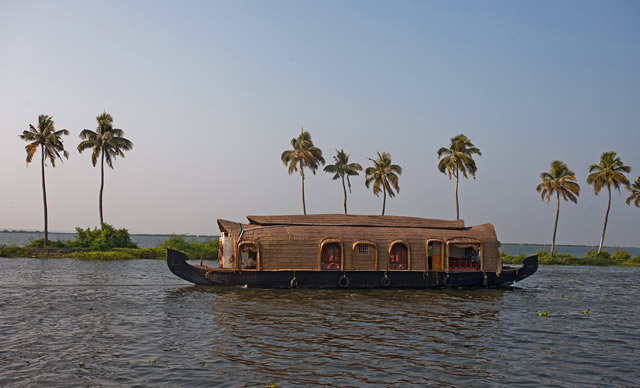
The backwaters also suffer from their share of problems, thanks to growing population, human control over water and growing tourism activity. Rules of construction are relaxed on the resorts springing up next to the lake, which are often permitted to build right next to the lake. The houseboats release many pollutants into the lake. Agricultural activity releases a large amount of fertilizers and pesticides into the lake, resulting in diminishing population of aquatic life. Water hyacinth, which strives on water with fertilizer content, is seen everywhere. Because the salinity of water is controlled artificially by bunds and locks, the variety and diversity in aquatic life has reduced over the years. However, for a visitor who is spending a brief holiday floating in the water, these problems remain faraway occurrences.
It has been a couple of months since this blog has become subdued and has lacked regular updates. The excuses are many and perhaps best left unsaid. But hopefully it is a thing of past, and hopefully I will have regular updates here in the days to come. Let me begin with a set of images of children from the mountains—Himalayas to be precise—all the way from Jammu and Kashmir to Arunachal Pradesh.
When I was about to begin this post, my plan was to hastily post a few images of children from my recent trip to Lahaul and Spiti region. Looking through the impressions of those innocent faces, a thought passed to me that the children from many parts of the Himalayas look a lot alike. They all come bundled with a twinkle in their eyes and a charming innocence in their faces. I then thought it would be worthwhile making a larger compilation of images from across the mountains. Here we go!
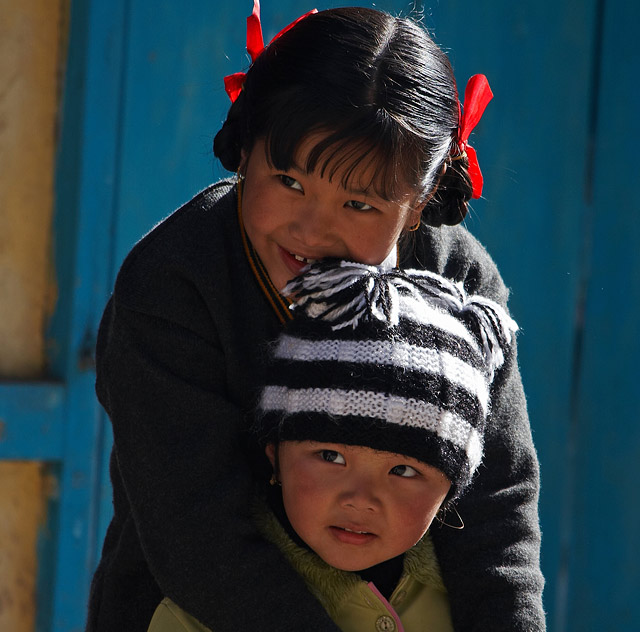
Let me begin with an old image from Tawang in Arunachal Pradesh. It is a photograph that made me happy and gave me some boasting rights. It was one of my very first images to get licensed for a reasonably good price.
On a crisp morning when we were searching for breakfast in the main street of Tawang, only to find that most restaurateurs were too lazy to serve what we wanted and preferred to offer us nothing more than a sandwich. Left without choice, sandwich is what we had to order and even that was bound to take some time to make. While the lazy cook took his time on the sandwich, I wandered the streets with my camera over the shoulder. It was the hour of the day when Indian Army bus was to come and pick up school children from their homes. This girl waited for the bus, while her little brother gave her company. I watched them chat with each other fondly for a while before making this picture.
Two years later, it was used by UNICEF for their annual calendar that had pictures of children from various ethnicities from across the world.
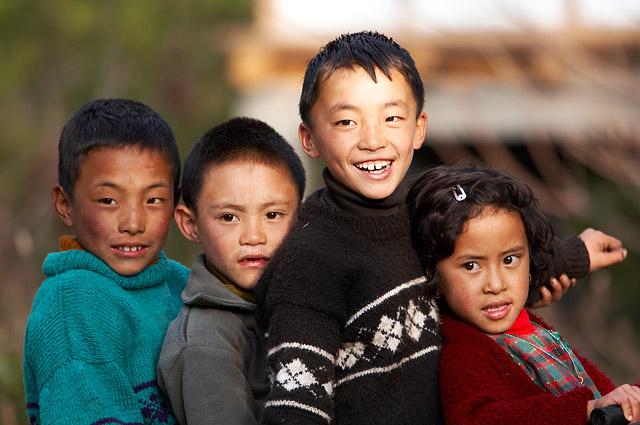
Happy, carefree children can be seen everywhere in Arunachal. All these four kids were riding on a bicycle—just one bicycle—at Jang Village on the way to Tawang. The tallest of the kids seemed to be the ‘leader of the gang’ who dictated what games they play and how they spend time. While the elders in this small village were away working, these kids were having a ball and posing happily for tourists.
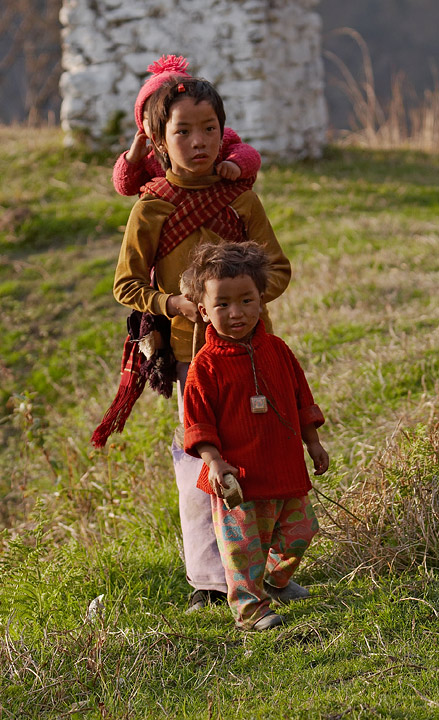
While the four kids above were having a good time, this girl was performing her duties nearby, taking care of her siblings. They seemed amused to see us, a little confused about how best to interact with us. The little kid riding on the back of her sister was shy and unsure what to do, occasionally peeping out to have a better look at us.
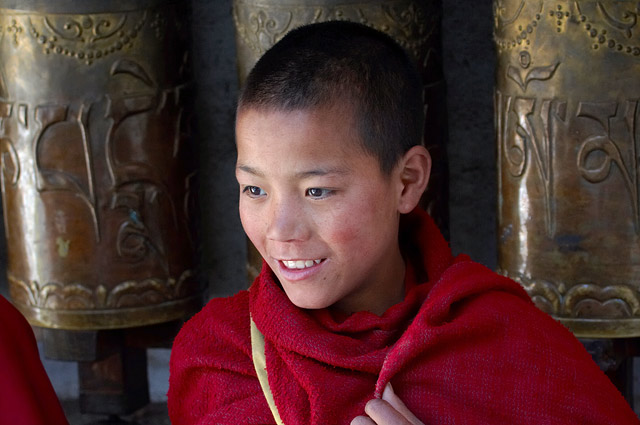
It is common to see little monks like this one—monklings as a friend once described them—giggling and running around chasing each other in the courtyard of the monasteries. We stopped by to have a chat with this fellow and his friend, but they turned from ebullient to shy when we spoke to them.
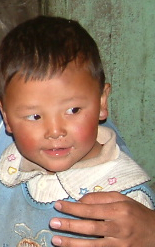 The image of this little fellow in Thangu Village is northern parts of Sikkim is perhaps the only image I have, of children in Sikkim. It is long time since I backpacked in Sikkim, a place I long to go back to but the the ordeal of reaching there keeps me out. Those were the days when I was shooting with a film camera and focused on photographing landscapes and only landscapes. Hopefully I will return there soon someday to get another dose of this beautiful mountain state.
The image of this little fellow in Thangu Village is northern parts of Sikkim is perhaps the only image I have, of children in Sikkim. It is long time since I backpacked in Sikkim, a place I long to go back to but the the ordeal of reaching there keeps me out. Those were the days when I was shooting with a film camera and focused on photographing landscapes and only landscapes. Hopefully I will return there soon someday to get another dose of this beautiful mountain state.
Uttarakhand is another region in Himalayas, from where I have no images of children. It is also another place that I visited a few times long ago, when my focus was largely on photographing landscapes. And similar to Sikkim, I hope to go back and backpack again some day soon, but haven’t made it so far thanks to the ordeal of getting there.
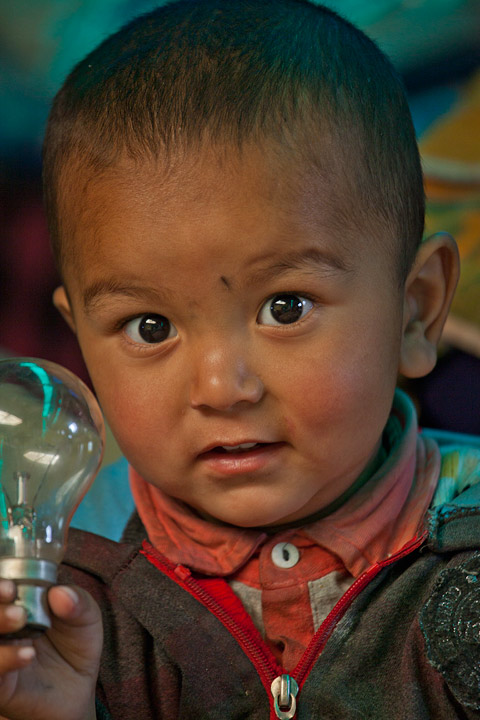
Next, when I was looking for images from Himachal Pradesh, the first that came to my mind was this little Thomas Alva Edison experimenting with his (rather dangerous) toy that was soon taken away from him. At Darcha Village, the last permanent habitation in Himachal Pradesh on the long road to Ladakh, I was tired and was not really keen to take my camera out. But one look at this guy, I knew I wasn’t left with that choice.
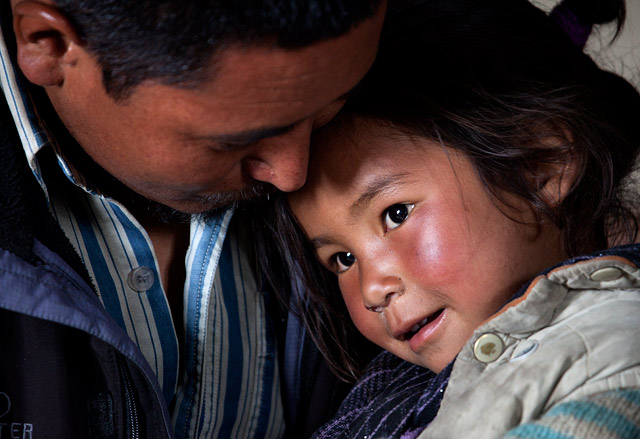
At Langcha Village in Lahaul and Spiti, we were invited for a cup of tea at the house of our guide Lara. It was a day when most of the village was in Kaza for the annual fair, having a good time watching performances. While Lara’s last daughter had no idea of the fair, she still was pleading with him to take her to Kaza, to enjoy a jeep ride. She was pacified by her father till she forgot about it.
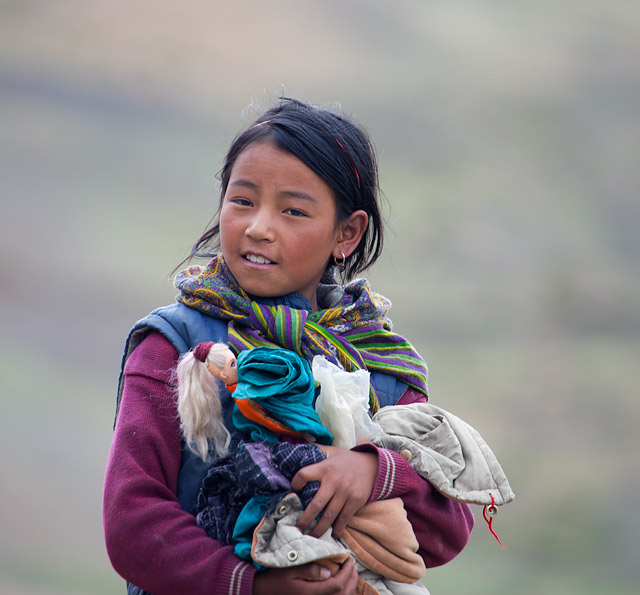
Eldest of Lara’s children, Lobsang must be about ten years old or less. Unlike other kids in the village, she had a much serious demeanour and seemed to have matured beyond her age. She also appeared obedient and spending a lot of time helping the elders with household chores besides going to school. I do not know why, but I had a feeling that she had lost her childhood sooner than one would.

Among all the children of the mountains I have seen, the Ladakhi kids are perhaps the naughtiest and the bravest. Here is a bunch of them having a good time at Korzok Gustor Festival, when monks wearing demon-like masks were performing at the courtyard of the monastery. Korzok Gustor Festival is an annual celebration at the monastery at Korzok Village, located on the banks of Tso Moriri Lake.
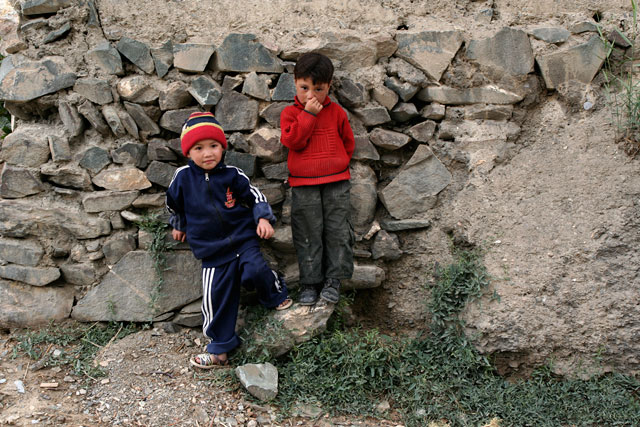
These kids were playing with stones near Lamayuru Village when I was out for a long walk. They became very conscious on seeing me and stood next to the wall, looking at me awkwardly. They were good for the camera anyway, awkward or otherwise.
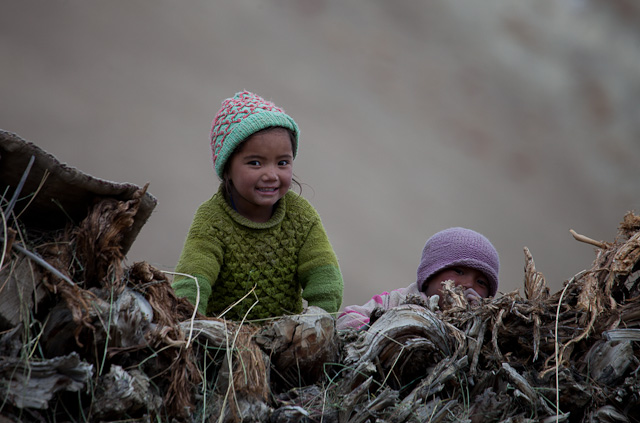
We had an awesome awesome time playing with kids in Zanskar during a cold winter season. Some of us played football with them (when the temperatures were somewhere ten degrees below zero), dragged the sledges for them or just laughed and ran around with them. In a season when Zanskar is completely cutoff by road from rest of the world and buried in snow, people of Zangle Village—kids and elders alike—were happy to have some visitors. These little siblings watched us play from their terrace. This girl called us as we were walking away and we had happy conversations in languages incomprehensible to each other.




















 The image of this little fellow in Thangu Village is northern parts of Sikkim is perhaps the only image I have, of children in Sikkim. It is long time since I backpacked in Sikkim, a place I long to go back to but the the ordeal of reaching there keeps me out. Those were the days when I was shooting with a film camera and focused on photographing landscapes and only landscapes. Hopefully I will return there soon someday to get another dose of this beautiful mountain state.
The image of this little fellow in Thangu Village is northern parts of Sikkim is perhaps the only image I have, of children in Sikkim. It is long time since I backpacked in Sikkim, a place I long to go back to but the the ordeal of reaching there keeps me out. Those were the days when I was shooting with a film camera and focused on photographing landscapes and only landscapes. Hopefully I will return there soon someday to get another dose of this beautiful mountain state.




